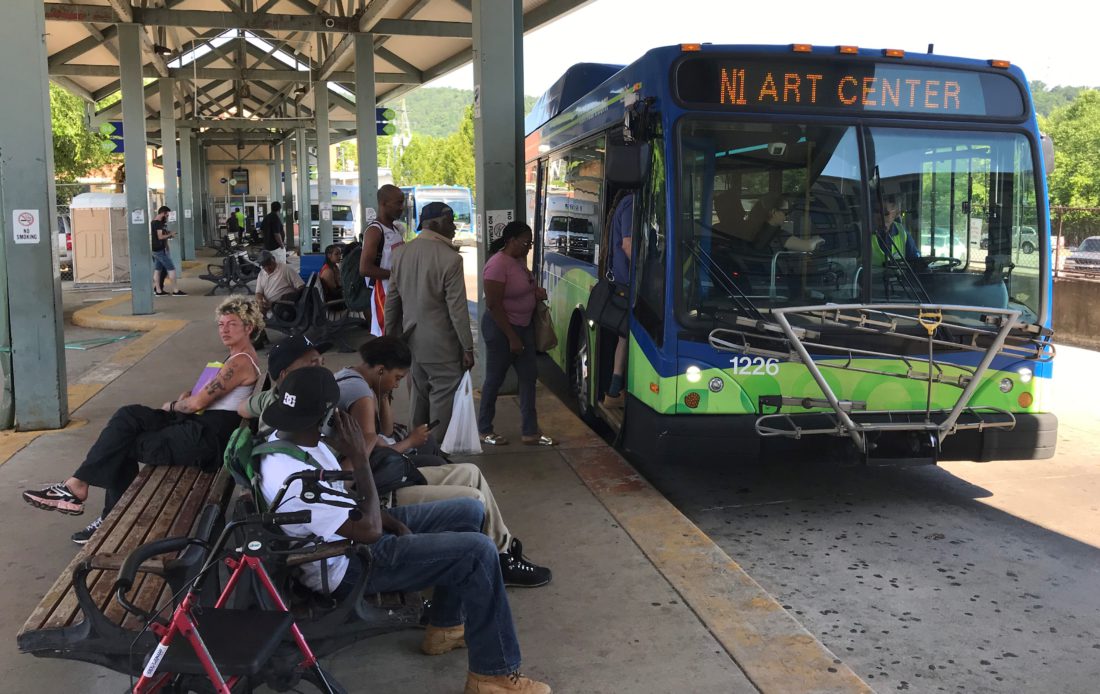Transportation planning often focuses on where the road between Point A and Point B should run and how wide it should be. But much of the conversation at the Strive Beyond Summit, taking place Friday, May 31, at Sierra Nevada Brewing in Mills River, will explore where those destinations should be to start with — and the event’s keynote speaker says market forces are telling us they should be closer together.
“The only purpose of transportation is to connect us to our homes, to the places we need to go. Where we put them will dictate whether our transportation system is affordable or effective, whether it is safe or not, whether it is convenient or not,” says Beth Osborne, head of national advocacy group Transportation for America and the summit’s headliner. Transportation will be more efficient and less polluting, she explains, if people live in close-in urban neighborhoods that offer places to live, work, shop and meet other needs.

Osborne and other speakers will discuss the role that land use plays in shaping the greater Asheville area’s transportation system and what that system might look like 40 years from now, says Ritchie Rozzelle, a transportation planner for the Land of Sky Regional Council and a summit organizer. Attendees are encouraged to dream big about that vision.
The upcoming widening of Interstate 26 from Woodfin to Hendersonville, for example, will ultimately be a “30-year project,” Rozzelle says. The summit will be about “what 30-year project should we be starting now.” He mentions possibilities such as regional express buses, long-distance greenways between towns and light rail.
The summit wraps up a month-long series of events put on by local government, environmental advocates and transportation groups primarily aimed at encouraging the use of alternatives to automobile transportation. For years, the effort was called Strive Not to Drive; Rozzelle says organizers changed the project’s name to Strive Beyond effective this year in recognition that, as a society, “We haven’t succeeded in giving folks workable alternatives … to jumping in the car.”
At least when it comes to commuting, the automobile has remained king in the Asheville metropolitan area. A U.S. Census Bureau survey found that 87% of residents in Buncombe, Haywood, Henderson and Madison counties used a car to get to work in 2017. That’s down from the 92.3% who commuted by auto in 2007, but the difference has little to do with people choosing public transportation, walking or biking.
Instead, the percentage of those working from home jumped from 4.3% to 10% over the 10-year period. For those who did leave home to work, commuting time was virtually unchanged. Average travel time to work was 21.8 minutes in 2007 and 21.4 minutes in 2017. That difference is within the survey’s margin of error.
However, Osborne says, national real estate trends now show a move away from interest in living in suburban areas accessible only by car and demand for denser, more walkable neighborhoods.
“This is the way humans have lived throughout human history,” she says. “The only time we didn’t live like that was the last 60 to 70 years, and the process has led to a system where we’re spending more and more time traveling to accomplish the simplest things. … I think people have run out of patience for it.”
More people would make that switch, Osborne argues, but many cities and towns have zoning rules that make the creation of new mixed-use neighborhoods difficult. As a result, demand pushes up the cost of housing that is available in walkable areas.
Osborne advocates relaxing zoning to increase supply, a change she says would make homes in urban areas more affordable: “We should let the market get what it wants.”
Some of this region’s more rapidly growing areas have been in suburbia, and public transportation accounts for a tiny share of trips to work — just half a percent in the Asheville metro area. But Rozelle believes residents need to be thinking now about how to connect areas where denser development is occurring or lies ahead.
“We’re to the point where we’re willing to say things like light rail and bus rapid transit are feasible and we can start these conversations,” he says. “If there’s one thing that interstate widening and construction has taught us, it’s that that’s not the silver bullet.”



Oh c’mon…you people continue to have “discussions “ that only amount to robbing the taxpayers. Can’t you break the chain of being so common and kneeling to peer pressure of other failed cities? Educate yourselves.